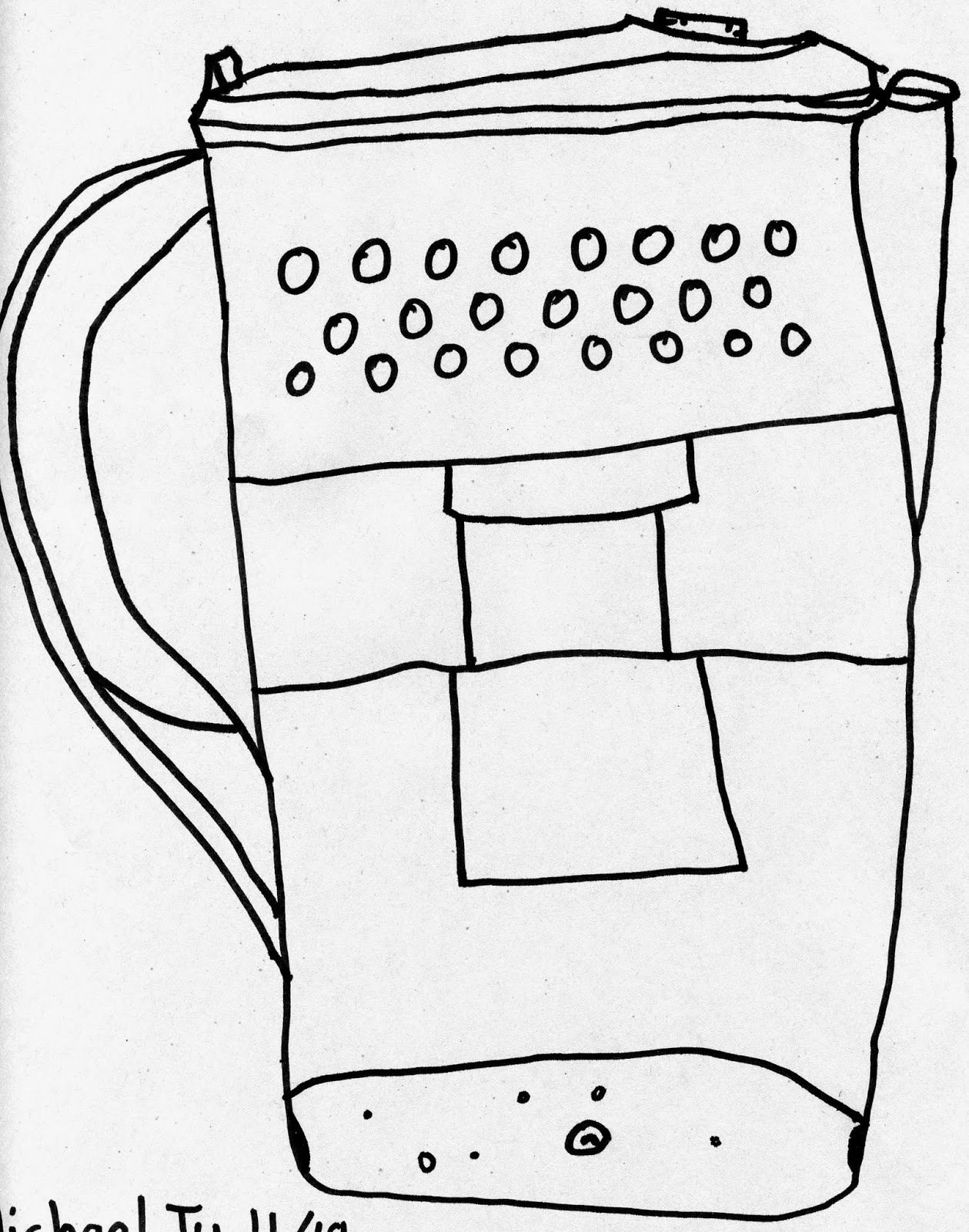Have you experienced this phenomenon? You want to draw. You
arrange a vase, two apples, and a bunch of banana on the table for a nice
still-life drawing. You start to draw, but your eyes are not looking at the
vase, the apples and the bananas, instead, your eyes are fixed on the paper. You
finish the drawing. It looks so stiff. You didn't get the flowing curve of the
vase or the small intricate shape on the head of the bananas. You wonder why.
Yes, this is the work of the trickster left-brain. It keeps telling you
impatiently, okay, okay, you already know these stuff. So you are drawing what
you think you know instead of what you see. In the exercise of blind contour
drawing we do not look at the paper. We fix our eye on the object and follow
its edges like a small snail crawling. The hand follows the eye
instead of the mind, so we are drawing what we see and not what we think
we know. And here is the result.
 |
| Lily Song, age 8 |
 |
| Max Peng, age 13 |
 |
| Herbert Wang, age 11 |
 |
| Michael Tu, age 10 |
 |
| Melisa Li, age 12 |





















